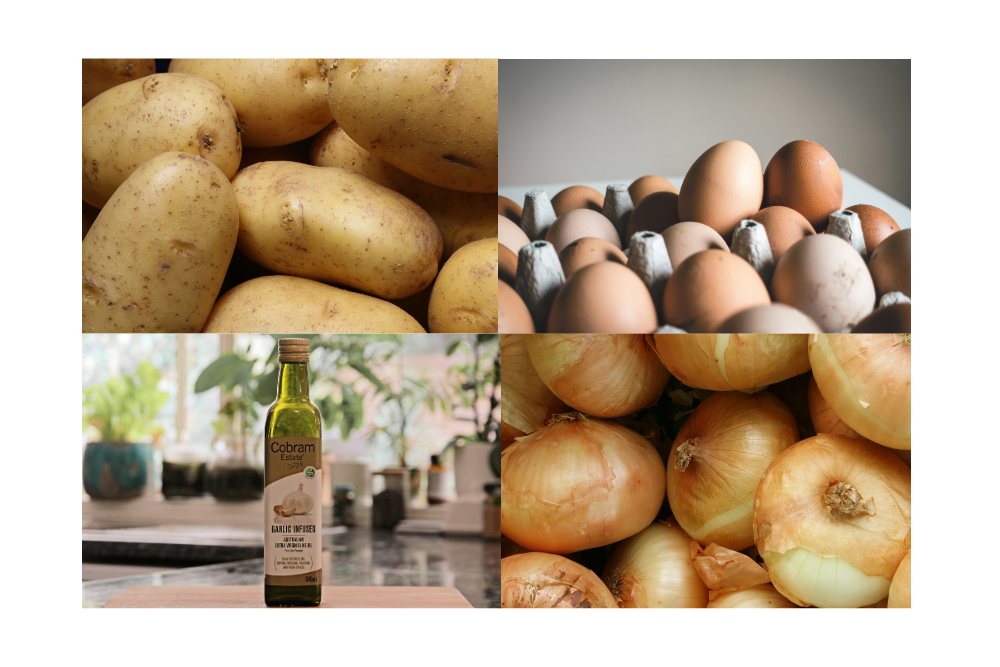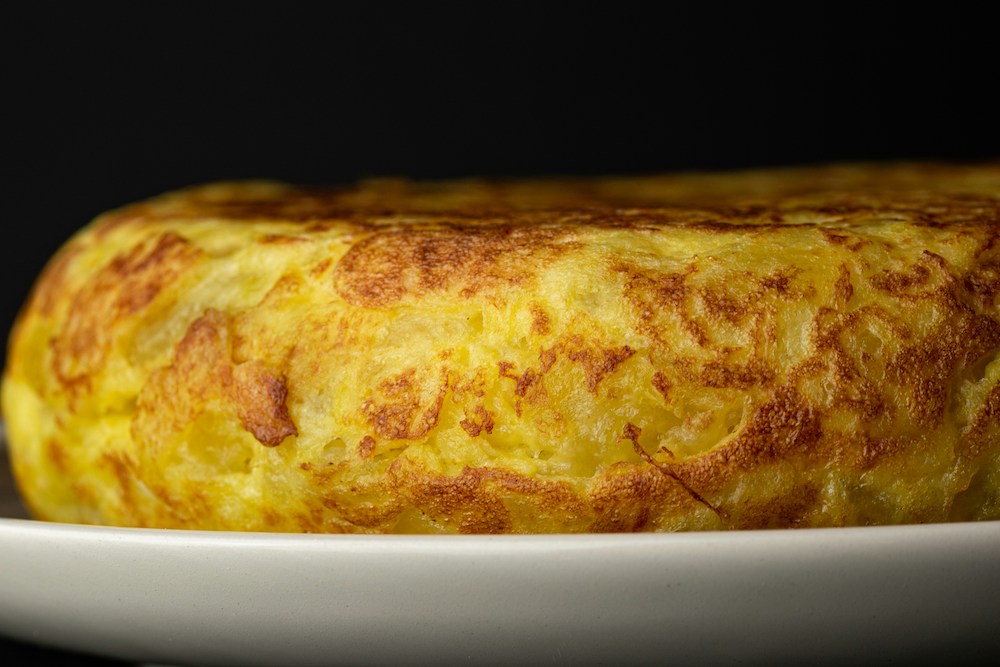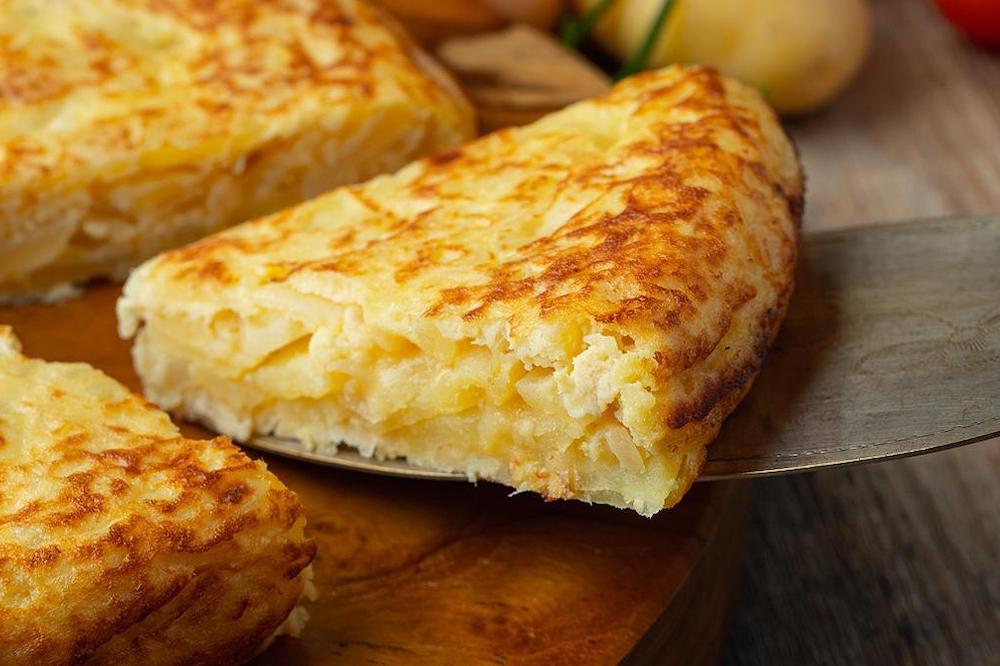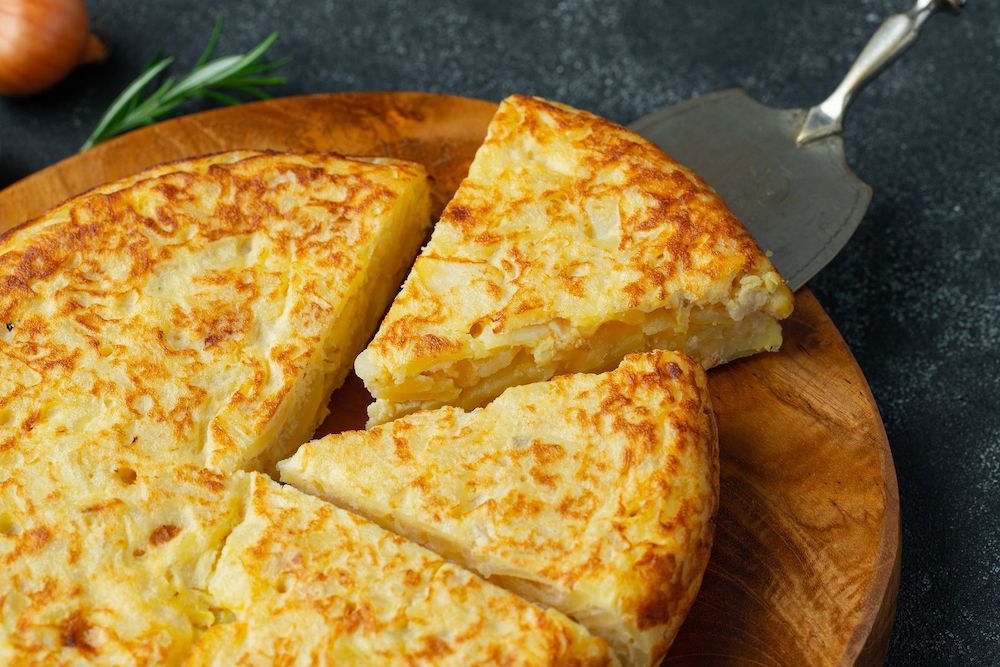
The perfect potato omelette: a classic of Spanish gastronomy
The Spanish omelette is an emblematic dish of Spanish cuisine, internationally recognized for its simplicity, versatility and delicious flavor. Also known as Spanish omelette or potato omelette in some regions, this culinary delight has conquered the palates of people of all ages and backgrounds. March 9 is the international day of the potato omelette, so we want to pay tribute to it, revealing its origins and teaching its original recipe.
Origin and history of this kitchen classic
The history of the Spanish omelette dates back to the 18th century in Spain. Although there is no absolute consensus on its origin, it is believed that this dish emerged as an ingenious solution to the poverty and food shortages experienced at that time.
It is said that the Spanish omelette was invented by the working classes, who combined two basic and inexpensive ingredients: eggs and potatoes. These foods were easily accessible to the majority of the population, which made the Spanish omelette a popular and widely consumed dish throughout the country.
Over time, the recipe for Spanish omelette has evolved and adapted to the tastes and preferences of each region of Spain, as well as to current gastronomic trends. Today, Spanish omelette is on the menu of practically all bars and restaurants in Spain, and is an essential element at any family gathering or social event.
Potato omelette recipe: surprise everyone with this basic dish
Here is a classic and easy-to-follow recipe to prepare a delicious potato omelette in the comfort of your home:
Ingredients:
- 4-5 medium potatoes
- 1 large onion
- 6 eggs
- Salt to taste
- Extra virgin olive oil
 Step by step instructions:
Step by step instructions:
Preparation of Ingredients:
- Start by peeling the potatoes and onion. Then, cut the potatoes into thin slices and the onion into julienne strips. A uniform cut will ensure even cooking.
Cooking the potatoes and onion:
- In a large skillet, pour enough olive oil and heat it over medium heat.
- Once hot, add the potatoes and onion.
- Cook, stirring occasionally, until the potatoes are tender but not brown. This may take about 15-20 minutes. The key is to cook them over medium heat so they cook slowly and soften without burning.
- Although the original recipe is made with onion, you can show your creativity in this step and add the ingredients you prefer. From other vegetables to chorizo, ham, mushrooms...
Preparation of the eggs:
- While the potatoes are cooking, beat the eggs in a large bowl and season with salt to taste. You can use a fork or a whisk for this task.
- Make sure the eggs are well beaten to obtain a soft and fluffy omelette.
Mix of ingredients:
- Once the potatoes are ready, drain them well to remove excess oil. Then add them to the bowl with the beaten eggs.
- Stir thoroughly to coat the potatoes with egg. This will ensure a uniform and tasty omelette.
Cooking the omelette:
- In the same pan where the potatoes were cooked, add a little more oil and heat it over medium heat. Pour the potato and egg mixture into the pan and spread it evenly with a spatula.
- Let the tortilla cook for about 4-5 minutes on each side, or until golden and set on the inside. You can use a large plate to flip the tortilla over and cook the other side.
Completion and rest:
- Once the tortilla is cooked, remove it from the heat and let it rest for a few minutes before serving. This will allow the flavors to settle and the tortilla to become firmer in texture.

And voilà! Now you can enjoy an authentic potato omelette. The versatility of this dish makes it a perfect choice for any occasion, whether it's a quick breakfast, a light lunch or a comforting dinner.
Different types of flavors in potato omelette
The best thing about Spanish omelette is that it is such a simple dish with such common and versatile ingredients that you can add almost any ingredient you like to give it a different touch and more flavor. Here, we are going to share with you our favorite variations of the omelette, but always remember to innovate with your favorite ingredients.
- Potato omelette with peppers: A popular variation of the Spanish omelette is one that incorporates peppers. These can be green, red or yellow peppers, adding a touch of colour and a slightly sweet and smoky flavour. The combination of peppers with potatoes and eggs creates a more flavourful and vibrant omelette.
- Tortilla with chorizo: Chorizo is a typical Spanish sausage that adds an intense smoky and spicy flavour to Spanish omelette. By adding chunks of chorizo to the mixture of eggs, potatoes and onions, a more robust and flavourful version of this traditional dish is created.
- Potato omelette with ham: Ham is another star ingredient in Spanish cuisine, and it is not surprising that it is used to enrich Spanish omelettes. By incorporating diced Serrano or Iberian ham into the preparation, you get an omelette with a salty touch and a deliciously smoky flavour that perfectly complements the potatoes and eggs.
- Cod omelette: A more sophisticated variation is the potato omelette with cod. Cod, a fish widely consumed in Spanish cuisine, is crumbled and mixed with the traditional preparation of the omelette. The result is a combination of marine flavours with the softness of potatoes and eggs, creating a unique culinary experience.
- Scrambled potato omelette: The tortilla de patatas revueltos is a less compact version of the classic tortilla. Instead of cooking the potatoes in slices, they are cut into smaller pieces and mixed directly with the beaten eggs, creating an omelette with a more unstructured and rustic texture.
- Potato omelette with truffle: A luxurious and sophisticated version of the Spanish omelette is one that incorporates truffle. Known for its distinctive aroma and earthy, delicate flavour, truffle is grated or sliced thinly and mixed into the omelette mixture before cooking. The result is an elegant and exquisite omelette, with a subtle but unmistakable truffle flavour that elevates this classic dish to new gastronomic heights.
- Caramelized onion potato omelette: Caramelized onions add a hint of sweetness and depth of flavor to Spanish omelette. To prepare this variation, onions are simmered in olive oil until they turn golden and caramelized, then mixed with potatoes and eggs before being cooked. The result is an omelette with a sweet and sour flavor and a silky smooth texture, perfect for those looking for a richer, more complex culinary experience.

In addition, to complement this delicious dish, it is usually accompanied by another lighter meal. These are our favorite options for Spanish omelette:
- Green salad: Nothing complements the richness of a Spanish omelette better than a fresh, crisp green salad. A mix of mixed greens, cucumber, tomato and avocado, dressed with a simple dressing of olive oil, vinegar and salt, provides a refreshing, light contrast that balances the creaminess of the omelette.
- Gazpacho: Gazpacho, a cold soup of tomato, cucumber, pepper, onion and garlic, is a refreshing and healthy option to accompany Spanish omelette, especially in the warmer months. Its fresh and vibrant flavour perfectly complements the creaminess of the omelette.
- Manchego cheese: This is a Spanish cheese with an intense and slightly salty flavour, it is the perfect complement to Spanish omelette. Its robust flavour and creamy texture add a touch of sophistication to every bite.
- Fresh bread: Bread is a classic and comforting companion for Spanish omelette. Whether in the form of a crusty baguette, country bread or sourdough bread, fresh bread is perfect to accompany every bite of omelette. You can enjoy it on its own, spread with a little olive oil, or use it to make sandwiches filled with pieces of omelette.
- Tomato salad: Tomato salad is a fresh and vibrant accompaniment that beautifully complements Spanish omelette. With ripe tomatoes cut into slices or chunks, dressed with extra virgin olive oil, balsamic vinegar, salt and fresh herbs such as basil or parsley, this salad provides a refreshing and acidic contrast that balances the creaminess of the omelette.
From the classic potato omelette to its variations: discover your favourite and surprise everyone
In conclusion, tortilla de patatas is a versatile dish that can be adapted to a wide variety of tastes and preferences. Whether with classic ingredients such as potatoes and onions, or with more creative variations such as chorizo, ham or even cod, tortilla de patatas remains a mainstay of Spanish gastronomy that never fails to surprise and satisfy. What will be your next culinary adventure with tortilla de patatas? Go ahead and explore and discover new variations and flavours!
FREQUENTLY ASKED QUESTIONS ABOUT THE POTATO OMELET
What is the origin of the potato omelette?
Although its exact origin is uncertain, the tortilla de patatas is thought to have originated in Spain in the 18th or 19th century. It became a popular dish among the working class due to its simplicity and ability to feed many people with inexpensive ingredients.
What is the ideal texture for a potato omelette?
The ideal texture of a potato omelette is soft and juicy on the inside, with a golden and crispy exterior.It should be cooked but still a little creamy in the center.
Can potato omelette be served cold or hot?
Spanish omelette can be enjoyed either hot or cold, and is a versatile dish that can be served as a main course, appetizer, or even as part of a sandwich.
How long can a potato omelette be kept?
A Spanish omelette can be kept in the refrigerator for 2-3 days. It can be reheated in the microwave or in a frying pan before serving.


